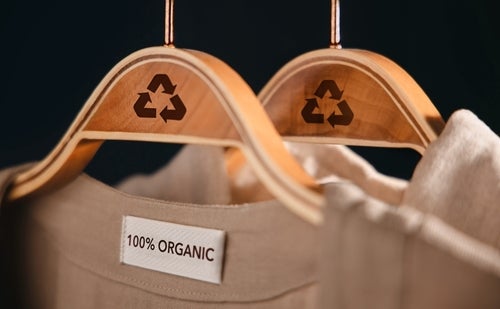
The consumer research titled: Next-gen materials: A 2023 assessment of the potential for U.S .consumer adoption, produced in collaboration between the Material Innovation Initiative (MII) and North Mountain Consulting Group, highlights a significant shift away from conventional animal products and current-generation synthetics.
The report surveyed over 1,000 US adults and found most (92%) expressed openness to purchasing next-gen materials.
Of those, 51% indicated they were somewhat or moderately likely to make such purchases, while 41% revealed they were very or extremely likely to do so.
The report describes the respondents falling into the “extremely” or “very” likely category as “early adopters” of next-gen materials and this group were all willing to pay at least the same price for next-gen materials in comparison to conventional materials.
The report explains that next-generation materials are a sustainable alternative to traditional animal-derived products such as leather, wool, down, silk, and fur, as well as petrochemical-based synthetics.
These eco-friendly materials are manufactured using a range of innovative methods and ingredients, including recycled textiles, plant-based fibres, algae, mycelium, agricultural waste, programmed microbes, and cultivated animal cells, all without relying on animals or their by-products.
How well do you really know your competitors?
Access the most comprehensive Company Profiles on the market, powered by GlobalData. Save hours of research. Gain competitive edge.

Thank you!
Your download email will arrive shortly
Not ready to buy yet? Download a free sample
We are confident about the unique quality of our Company Profiles. However, we want you to make the most beneficial decision for your business, so we offer a free sample that you can download by submitting the below form
By GlobalDataKey findings from the next-gen report
- All “early adopters” expressed willingness to pay the same or a higher price for next-gen materials.
- In a shopping scenario, 60% of respondents preferred a next-gen leather item over a conventional one.
- For early adopters, factors such as quality, sustainability, cost, and animal welfare were key motivators in their decision to purchase next-gen materials.
- 86% indicated that leather was a type of next-gen product early adopters would purchase in the next five years, followed by Down at 75%, wool at 73%, 71% chose silk and 54% said Fur.
Nicole Rawling, MII CEO and co-founder, highlights the significance of the report’s findings, stating: “This report indicates broad US consumer interest in purchasing fashion accessories and apparel, home furnishings, and automotive interiors made with next-gen material. “If next-gen materials become widely available and affordable options within the US market, we expect next-gen materials to become widely adopted by consumers.”
Rawling noted the encouraging consistency in consumer interest for next-gen materials between the 2023 study and the same study conducted in 2021.
She said: “This shows us that despite the difficult economy, consumers are still interested in products which are better for the planet and animals and are willing to pay more for them.”
“Consumers who are less interested in next-gen and prefer animal-based materials appear to be motivated primarily by their inexperience with the material and concerns over quality,” Rawling added. “This shows a need for material companies and brands to ensure their products meet consumer performance and quality expectations to ensure long-term adoption.”







